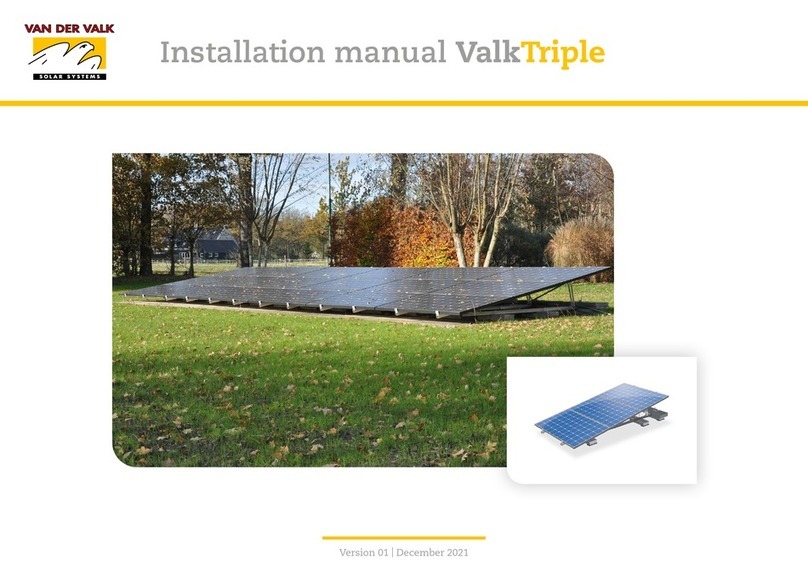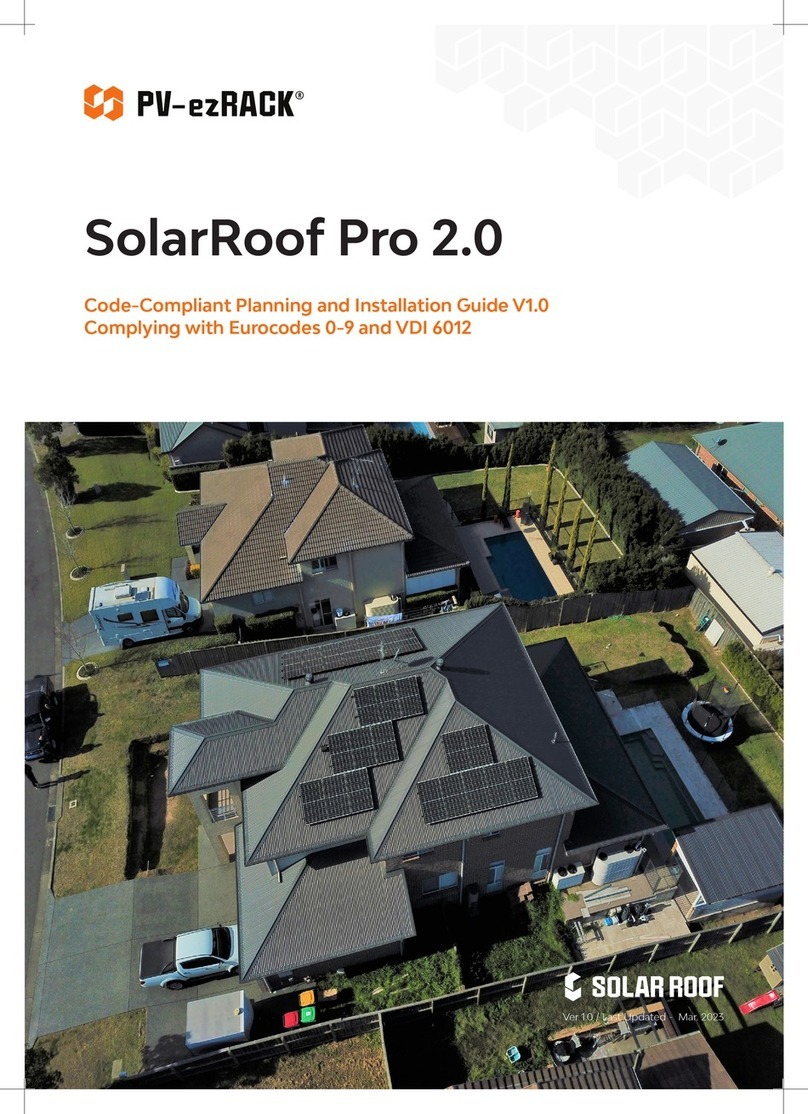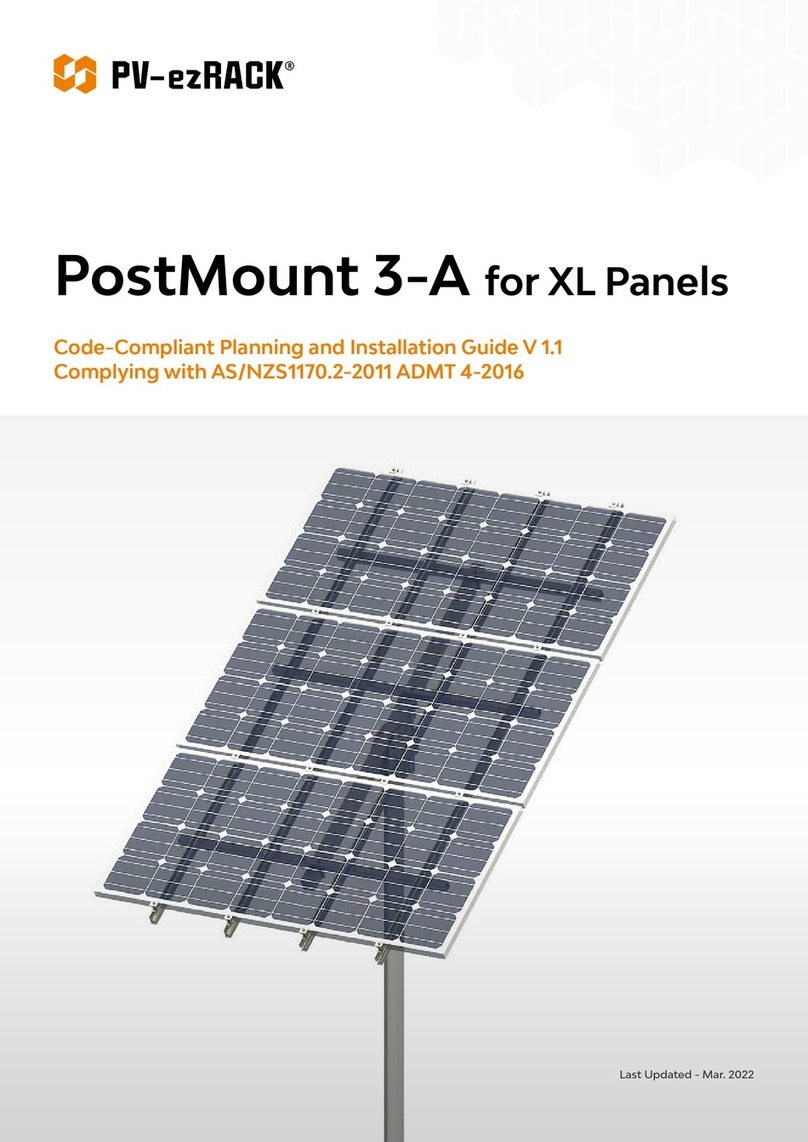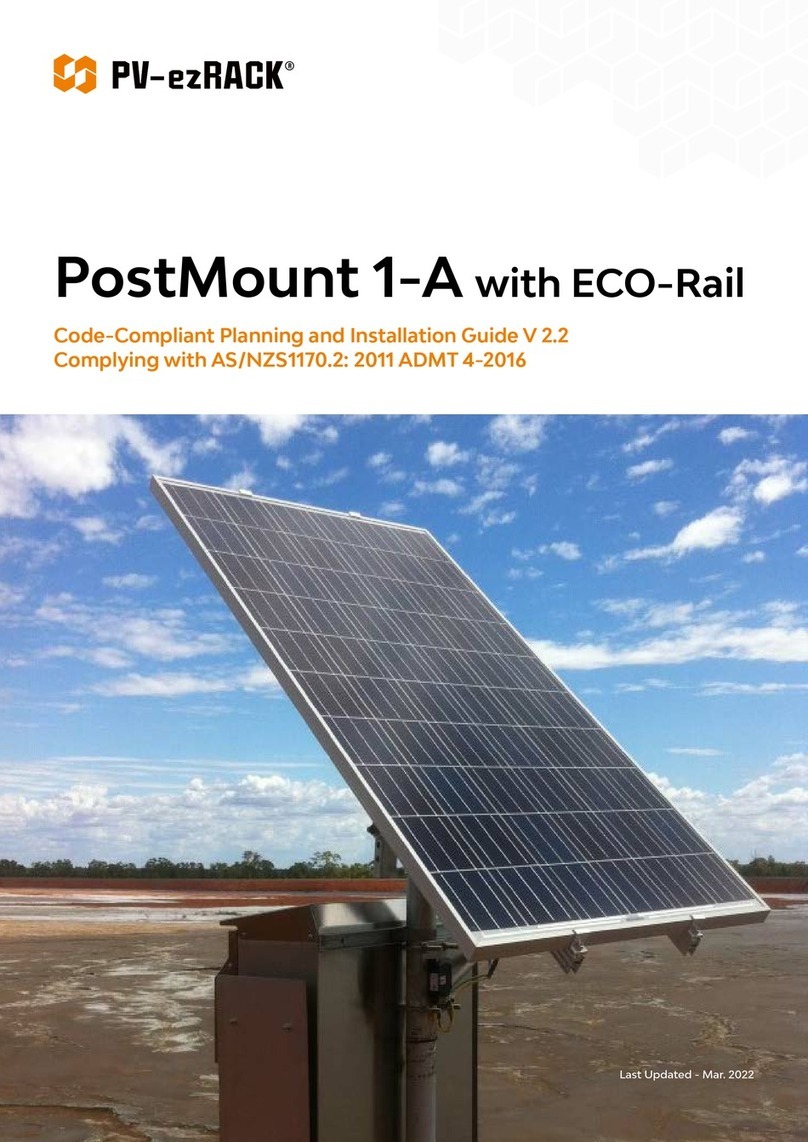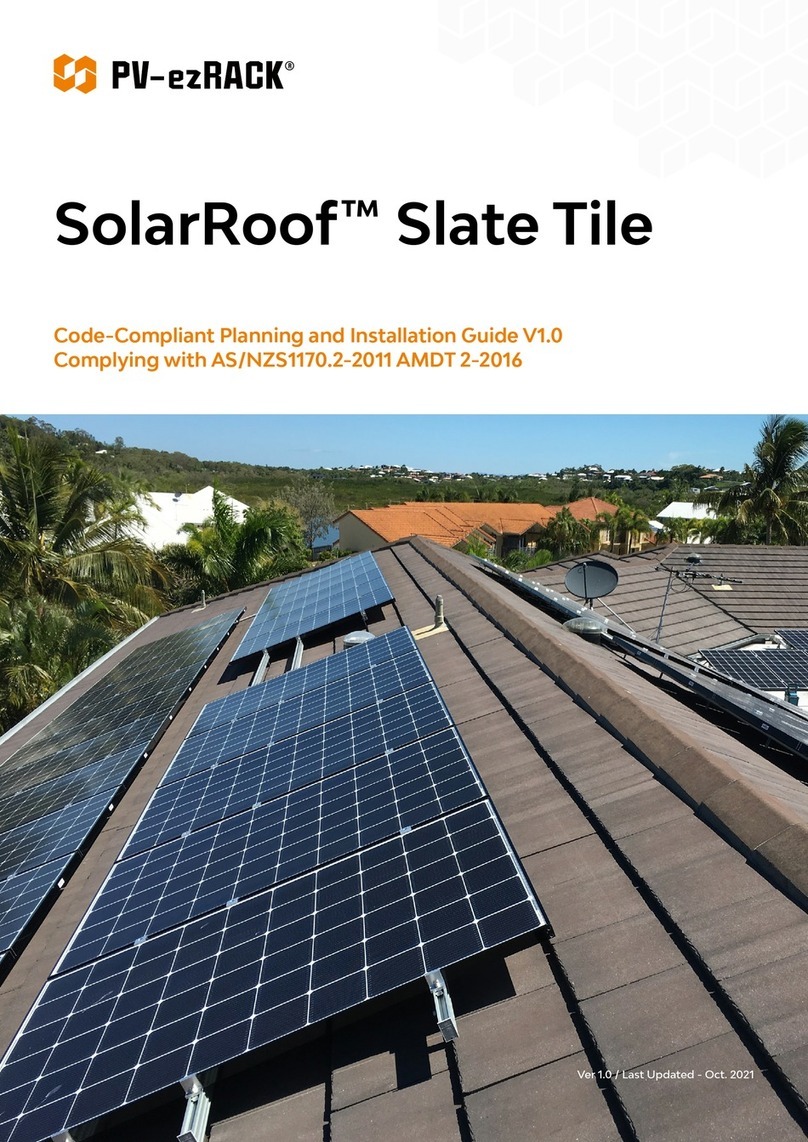
Installation Guide / ComT 2.0: 5°, 10° and 15°
1Code-Compliant Planning and Installation Guide V1.0 - Complying with AS/NZS1170.2-2011 AMDT 2-2016
Introduction
Using only PV-ezRack® parts and installer- supplied
parts as specified by PV-ezRack® project plan
(substitution of parts may void the warranty and
invalidate the letter of certification).
Recycling: Recycle according to the local relative
statute.
Removal: Reverse installation process.
Ensuring that there are no less than two professionals
working on panel installation.
Ensuring the installation of related electrical
equipment is performed by licenced electricians.
Ensuring safe installation of all electrical aspects of
the PV array, this includes adequate earth bonding of
the PV array and PV-ezRack® SolarRoof components
as required in AS/ NZS 5033-2014 AMDT 2 2-2018.
Ensuring that the roof, its rafters/purlins, connections,
and other structural support members can support
the array under building live load conditions.
Ensuring that screws to fix interfaces have adequate
pull-out strength and shear capacities as installed.
Maintaining the waterproof integrity of the roof,
including the selection of appropriate flashing.
Verifying the compatibility of the installation
considering preventing electrochemical corrosion
between dissimilar metals. This may occur between
structures and the building and also between
structures, fasteners and PV modules, as detailed in
AS/NZS 5033: 2014.
Verifying atmospheric corrosivity zone of installation
site by referring to AS 4312-2008 or consulting local
construction business to determine appropriate
products and installation.
•
•
•
•
•
•
•
•
•
•
•
Complying with all applicable local or national
building codes, including any updates that may
supersede this manual.
Ensuring that PV-ezRack® and other products are
appropriate for the installation and the surrounding
environment.
•
•
The installer is solely responsible for:
List of contents
Introduction
Planning
Tools & Components
System Overview
Installation Instruction
Product Warranty
Certification
01
02 - 04
05 - 06
07 - 11
12 - 18
19 - 21
22 - 41
The PV-ezRack® ComT is developed for PV installation
on flat or pitched roofs. The unique fixing parts can be
quickly and easily installed with simple tools.
Please review this manual thoroughly before installing
PV-ezRack® ComT. This manual provides:
1) Supporting documentation for building permit
applications relating to PV-ezRack® ComT.
2) Planning and installation instructions.
The PV-ezRack® ComT parts, when installed
in accordance with this guide, will be structurally
sound and will meet the AS/ NZS1170.2:2011 Amdt 2-
2016 standard. During installation, and especially when
working on the roof, please comply with the appropriate
Occupational Health and Safety regulations. Please
also pay attention to any other relevant State or Federal
regulations. Please check that you are using the latest
version of the Installation Manual, which you can obtain
by contacting Clenergy Australia via email at tech@
clenergy.com.au or contacting your local distributor in
Australia.
- Introduction -





